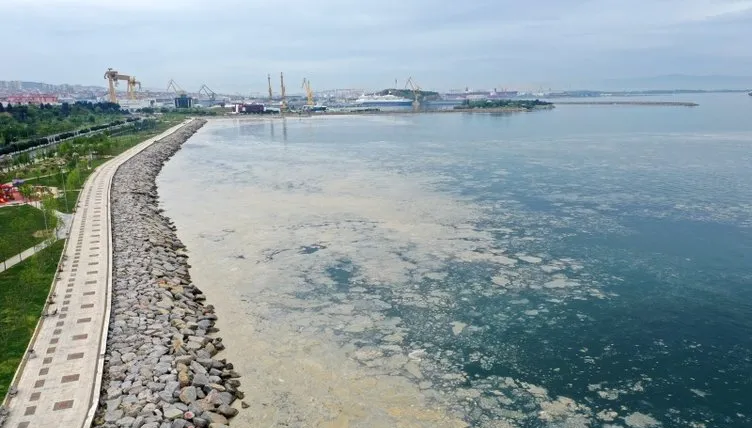“Sea saliva” is back: an environmental threat is being recorded at Turkish resorts
13 May 18:08
On the coast of the Sea of Marmara in Turkey, the appearance of the so-called “sea saliva” – white mucus that covers the water surface and poses a serious threat to both the marine ecosystem and the tourist attractiveness of the region – has been recorded again. This was reported by "Komersant Ukrainian" with reference to Anadolu Ajansı.
Currently, white slime is observed in the waters of the port of Erdek, one of the most popular tourist destinations on the Marmara Sea coast. According to Prof. Mustafa Sara, who documented the spread of the biomass, the situation tends to worsen with the onset of heat.
The scientist emphasized that the first signs of the phenomenon were recorded back in 2008, but in 2021 it became widespread, covering almost the entire surface of the Sea of Marmara. If the current warming continues, there is a possibility that a similar situation will recur in the summer season of 2025.

The consequences for tourism could be significant: water pollution and the unpleasant odor from the mucus could significantly reduce the number of vacationers, especially in inland Turkish resorts where the Sea of Marmara is the main recreation area.
Local environmentalists are calling for the urgent implementation of wastewater filtration systems and limiting waste discharge into the sea. In 2021, such measures were partially implemented, but, as can be seen from recent events, this was not enough.
The return of the “sea saliva” once again raises the issue of balancing the environment and the economy for the Turkish authorities, an issue that is becoming increasingly relevant for the entire Mediterranean region.
What is “sea saliva” and how does it threaten Turkey?
“Sea saliva,” also known as sea slime, is a thick, sticky substance that results from the excessive production of organic matter in seawater. This phenomenon occurs when phytoplankton – microscopic algae – overproduce due to a combination of pollution, high water temperatures, and stagnant marine conditions.
What causes sea-saliva?
“Sea saliva is primarily caused by:
- rising sea temperatures associated with climate change;
- nutrient pollution from untreated sewage, agricultural runoff and industrial emissions;
- lack of water circulation, especially in closed or semi-closed seas such as the Sea of Marmara.
These factors lead to eutrophication, a process where water becomes excessively rich in nutrients, causing massive plankton blooms. When the plankton dies, its organic remains form a slime-like mass that floats on the sea surface.
Why is this a problem for Turkey?
Turkey, and the Sea of Marmara in particular, has become a hotspot for outbreaks of sea saliva. This is how it threatens the country:
- Environmental impact. Blocks sunlight from reaching underwater ecosystems, harming marine life. Depletes oxygen in the water, leading to massive fish kills. Suppresses corals and seagrass, reducing biodiversity.
- Economic losses. Tourism suffers as beaches become unattractive and smell bad, which scares away visitors. The fishing industry is disrupted by dead zones and clogged nets. Maritime trade can suffer due to littering in ports and harbors.
- Health problems for locals and tourists. Marine saliva can contain harmful bacteria and viruses. Contact with contaminated water can cause skin and respiratory problems
The 2021 outbreak and current concerns
In 2021, the Sea of Marmara experienced the worst slime outbreak in history, covering large stretches of coastline and causing a national crisis. Despite cleanup efforts, the root causes – warm waters and pollution – remain largely unaddressed.
Experts warn that without aggressive intervention, the slime could spread again during the hot summer months, threatening both ecosystems and economic activity.
Читайте нас у Telegram: головні новини коротко









